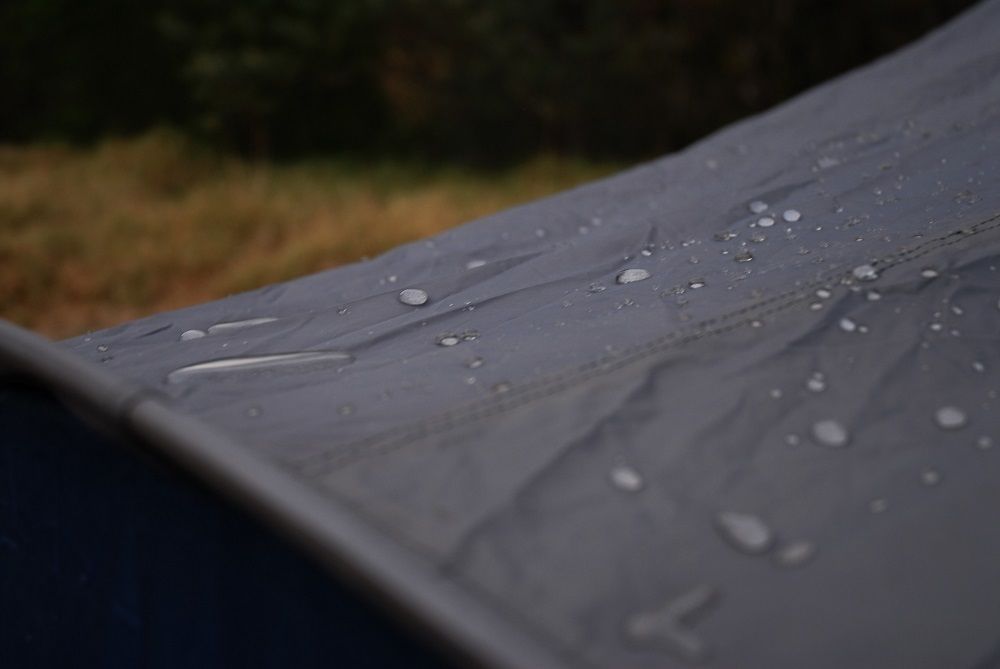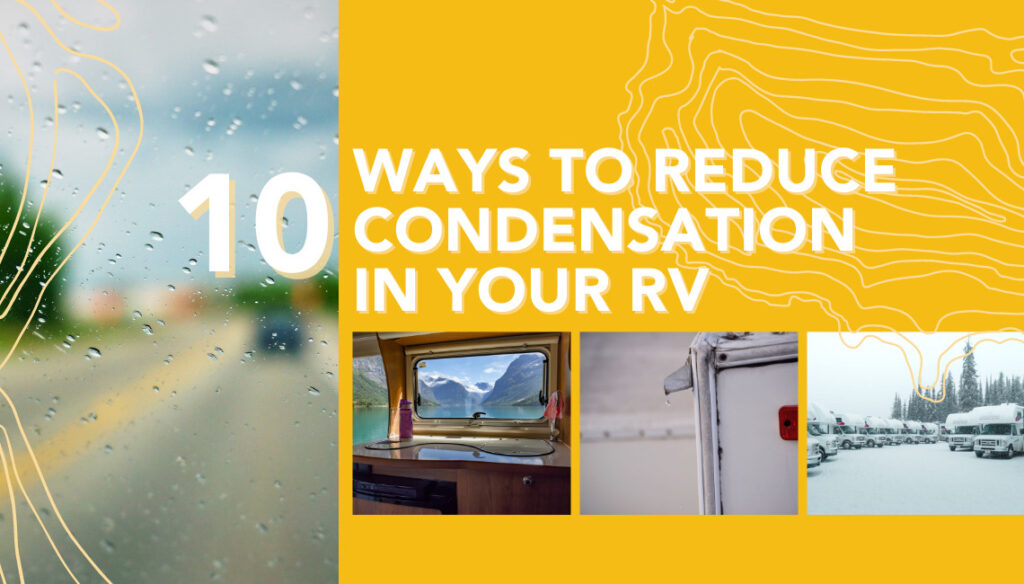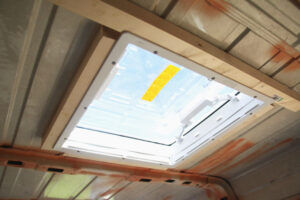Introduction
Staying in a caravan offers a unique blend of adventure and comfort, allowing travelers to explore nature while enjoying the conveniences of home. However, like any living space, caravans come with their own set of challenges. One of the most common issues faced by caravan enthusiasts is condensation. This phenomenon, while seemingly harmless, can lead to a host of problems if not addressed promptly. Understanding the causes and effects of condensation is crucial for anyone looking to make the most of their caravan experience.
Condensation in a caravan is not just a winter problem; it can occur at any time of the year. The formation of water droplets on windows, walls, and other surfaces can be a nuisance, leading to dampness, mold growth, and even structural damage if left unchecked. While it’s impossible to eliminate condensation entirely, understanding its causes and implementing preventive measures can significantly reduce its impact, ensuring a comfortable and safe caravaning experience.
Understanding Condensation
Condensation is the process by which water vapor in the air turns into liquid water upon coming into contact with a cooler surface. In the confined space of a caravan, this can happen frequently due to various daily activities and external factors. The key to managing condensation lies in understanding its root causes and the conditions that exacerbate it.
While condensation is a natural process, in the enclosed environment of a caravan, it can lead to several issues. It’s not just about the time of the year or the activities that cause it; it’s also about how one lives in the caravan and the location. Recognizing the signs of condensation and being proactive in addressing them can make a significant difference in the overall health and longevity of the caravan.

Causes of Condensation in a Caravan
The primary cause of condensation in a caravan is the difference in temperature between the interior and exterior environments. This temperature disparity can lead to the formation of water droplets, especially during colder months. Activities like cooking, breathing, and even the simple act of storing wet clothes can exacerbate the problem, making it essential to be aware of these triggers.
– Poor Caravan Ventilation: One of the most common culprits behind condensation is inadequate ventilation. When windows and doors remain shut for extended periods, especially during daily chores or nighttime, it creates a temperature difference between the inside and outside of the caravan. This difference is a prime condition for condensation, particularly during colder seasons.
– Cooking In Your Caravan: Cooking releases moisture and water vapors. When done with closed windows and doors, these vapors accumulate, leading to a temperature disparity and, consequently, condensation. It’s essential to ensure proper ventilation during and after cooking to prevent this.
– Weather Affects Your Caravan: Cold weather naturally prompts individuals to seal their caravans tightly, using heaters to maintain warmth. However, this can lead to condensation forming on colder surfaces like roofs and doors.
– Storing Wet Clothes In A Caravan: Wet items, be it clothes, towels, or coats, can significantly contribute to condensation. The moisture from these items can lead to a temperature difference, a primary factor triggering condensation.
– Human Impact: Surprisingly, human activities play a significant role in caravan condensation. Breathing and sweating can introduce a considerable amount of moisture. An adult can produce about 1 liter of water just by breathing over 12 hours, contributing to the moisture levels inside the caravan.

Ways to Stop Condensation in a Caravan
Addressing condensation requires a multifaceted approach, combining preventive measures with active solutions. By understanding the causes, caravan owners can implement strategies to minimize the impact of condensation, ensuring a comfortable living environment.
– Improve Your Caravan Ventilation: Enhancing airflow is a straightforward solution to combat condensation. A well-ventilated caravan can significantly reduce moisture levels. Ideally, a caravan should have multiple openings for ventilation. Additionally, using battery-operated or DC fans can further improve airflow, effectively reducing condensation.
– Don’t Do Laundry In Your Caravan: Drying clothes inside the caravan can introduce additional moisture, exacerbating the condensation problem. Instead, utilizing campsite facilities or nearby laundromats can help mitigate this issue.
– Wood Stoves For Caravans: Wood stoves can be a boon in combating condensation. They operate by utilizing the moisture in the air. By reducing moisture levels, wood stoves can effectively prevent condensation, especially during colder months.
– Ventilated Heaters For Your Caravan: While heaters are essential during winters, they can produce water vapor, contributing to condensation. Externally ventilated heaters, however, produce minimal water vapors, making them an excellent choice for caravans.
– Dry Your Caravan Thoroughly: If the caravan is not in use or being stored, it’s crucial to ensure all areas, especially prone to dampness, are thoroughly dried. This includes walls, cupboards, and furniture. Using damp absorption crystals can also help in absorbing moisture, protecting the caravan from potential condensation and dampness.

Distinguishing Between Condensation and Damp
While both condensation and damp are related to moisture, they are not the same. Condensation is the formation of water droplets on surfaces due to temperature differences, while damp is a more persistent moisture problem that can lead to structural issues and mold growth if not addressed.
Condensation can be a precursor to damp if left unchecked. While condensation can be seen as water droplets forming on surfaces, damp presents more visible signs, such as spots on caravan walls and a distinct musty odor. Addressing condensation promptly can prevent the more severe and damaging problem of damp, ensuring the longevity and health of the caravan and its occupants.
Consequences of Condensation in a Caravan
Condensation, if left unaddressed, can lead to a myriad of problems that go beyond mere discomfort. The persistent presence of moisture can have both health and structural implications, making it imperative for caravan owners to be vigilant and proactive in managing condensation.
– Health Risks: One of the most immediate concerns with unchecked condensation is the growth of mold. Mold thrives in moist environments and can pose significant health risks. Prolonged exposure to mold can lead to skin, eye, and throat irritations. For individuals with respiratory issues or allergies, mold can exacerbate symptoms, making the caravan environment potentially hazardous.
– Structural Damage: Beyond health concerns, condensation can also lead to structural damage. Persistent moisture can cause corrosion, particularly in metal components of the caravan. Over time, this can weaken the structural integrity of the caravan, leading to costly repairs and reducing the lifespan of the vehicle.

Additional Tips
While the primary methods to combat condensation have been discussed, there are additional tips and tricks that can further aid in maintaining a dry and comfortable caravan environment. These supplementary measures can be easily incorporated into one’s caravan routine, ensuring optimal conditions.
– Effective Products to Get Rid of Moisture: There are several products on the market designed to combat moisture in confined spaces. Dehumidifying crystals, for instance, can be placed around the caravan to absorb excess moisture. Similarly, clove oil solutions can act as a natural deterrent to mold, helping to keep the caravan fresh and mold-free.
– Ventilation and Heating: Regularly opening windows, even for short periods, can significantly improve ventilation, reducing the chances of condensation. Additionally, using low-wattage heaters can help maintain a consistent temperature, preventing the cold surfaces that often lead to condensation.
Ways to Stop Condensation in a Motorhome
Motorhomes, much like caravans, are susceptible to condensation due to their confined spaces and the activities carried out within them. Addressing condensation in a motorhome requires a combination of preventive measures and active solutions tailored to the unique challenges motorhomes present.
– Using Dehumidifiers and Moisture Removing Products: Dehumidifiers are invaluable tools in combating condensation. Modern models often come equipped with humidistats that detect and maintain safe humidity levels. Products like Damp Rid or Eva-dry can also be used to absorb excess moisture, ensuring a dry environment.
– Heating and Ventilation: Double pane windows can act as insulators, reducing the chances of condensation. When cooking, using lids and ensuring proper ventilation can prevent moisture buildup. Running fans can help distribute air evenly, preventing cold spots that can lead to condensation. Ceramic electric space heaters can also be effective in maintaining a consistent temperature, further reducing the risk of condensation.

Summary
Condensation is a pervasive issue faced by many caravan and motorhome owners. While it’s a natural occurrence, the confined spaces of these vehicles can exacerbate the problem, leading to potential health and structural concerns. Understanding the causes of condensation and implementing effective solutions is crucial.
From daily activities like cooking and breathing to external factors like weather, numerous elements can contribute to condensation. However, with proper knowledge and proactive measures, it’s possible to significantly reduce its impact. Whether it’s improving ventilation, using specialized products, or being mindful of one’s activities, there are myriad ways to combat condensation. By addressing this issue head-on, caravan and motorhome enthusiasts can ensure a comfortable, safe, and enjoyable experience on their travels.
Conclusion
Caravanning and motorhome adventures offer a unique blend of freedom and comfort, allowing enthusiasts to explore the world from the coziness of their mobile abode. However, the joy of such experiences can be marred by the persistent issue of condensation. This seemingly innocuous problem, if left unchecked, can escalate into significant health and structural challenges. From the detrimental effects of mold growth to the potential corrosion of the caravan’s components, the consequences of neglecting condensation are far-reaching.
Understanding the root causes of condensation, be it human activities, weather conditions, or inadequate ventilation, is the first step towards addressing it. Armed with this knowledge, one can implement a range of solutions, from simple practices like improving ventilation and being mindful of moisture-inducing activities, to investing in specialized products like dehumidifiers and moisture-absorbing crystals.
It’s also essential to recognize that while caravans and motorhomes share many similarities, they each come with their own set of challenges. Tailoring solutions to the specific needs of each vehicle type can yield more effective results. In the end, the goal is to ensure a safe, comfortable, and moisture-free environment, allowing travelers to focus on the joys of the journey rather than the pitfalls of condensation.
By proactively addressing condensation and being equipped with the right tools and knowledge, caravan and motorhome enthusiasts can ensure that their adventures remain memorable for all the right reasons. After all, the essence of such travels lies in the joy of exploration, and a dry, comfortable living space is integral to that experience.



